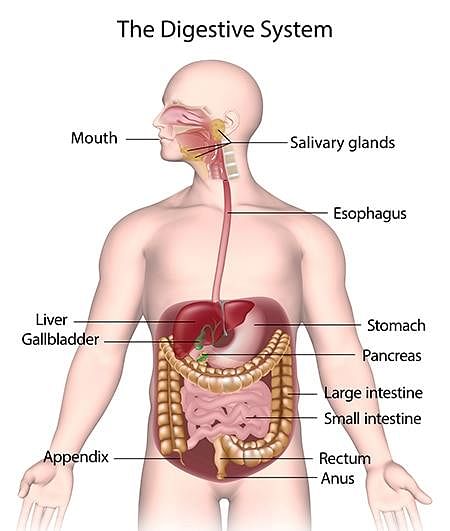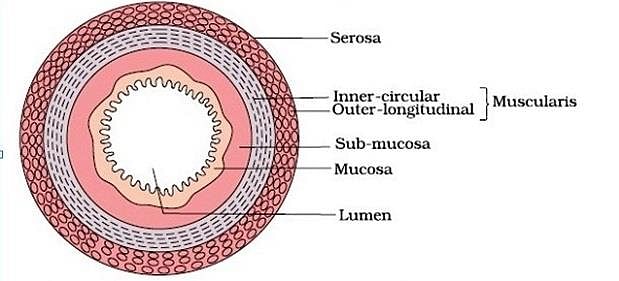Test: Digestion & Absorption - 2 (Old NCERT) - JAMB MCQ
25 Questions MCQ Test Biology for JAMB - Test: Digestion & Absorption - 2 (Old NCERT)
The optimum pH meant for hydrolyzing starch is
Absorption of fats takes place through :
| 1 Crore+ students have signed up on EduRev. Have you? Download the App |
People who are lactose intolerant:
(i) Cannot digest food with lactose in them.
(ii) They need to take a calcium supplement.
(i) Cannot digest food with lactose in them.
(ii) They need to take a calcium supplement.
_____ from pharynx is conveyed into the oesophagus by _____ .
Active form of which enzyme hydrolyses milk protein in the stomach?
Liver stores extra glycogen but once storage limit is reached then extra carbohydrate will be:
The bile duct and the pancreatic duct open together into the duodenum as
Correct sequence of layers in gut wall from inside to outside is :
Which of the following is not a common disorder associated with the digestive system?
Trans-fats:
(i) They are found in most processed and fast foods. Example: French fries.
(ii) They help food stay fresh for a long time.
(iii) They are much better type of fat than saturated fats.
Read the following statements :
i. In ruminants cellulose digesting bacteria are present in the digestive system.
ii. Such digestion by microbial activity is called antagonistic digestion.
iii. Camels and deers are ruminants lacking an omasum chamber.
In Reema’s body, substances in bile harden forming stone in the gall bladder. What can be the possible treatment?
Which of the following is a mismatched pair?
Which among the following is not in the wall of the alimentary canal?
Which layer of alimentary canal forms villi?
Numerous folds present on the inner surface of stomach are called rugae. Another part of digestive tract which contains rugae is
Which of the following is not secreted from its source in the form of a Zymogen :
If an imaginary food contains 5 grams of protein, 4 grams of fat and 10 grams of carbohydrates. Now calculate total calories it would provide (given 1g protein = 4 calories, 1g fat = 10 calories, 1g carbohydrates = 4 calories) :
The reflex action of vomiting is controlled by
Blood vessels of alimentary canal :
(i) provide nourishment to the cells of the alimentary canal.
(ii) absorb digested fat molecules from the stomach and intestine.
Out of the following which one don’t provide any calories :
Parodontax toothpaste launched few months ago that help to prevent periodontal disease which are caused by microbe named :
In the stomach, gastric acid is secreted by the
|
224 videos|175 docs|151 tests
|



















